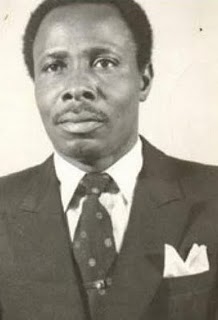The Kenyans: Their main rivals in the distances are their East African neighbors from Ethiopia, but this country continues to dominate the long distance races. The Kenyan women already swept both the women's marathon and 10,000m on Day 1, claiming all six medals. The highlight: Edna Kiplagat winning the marathon despite being tripped by her teammate as they made a grab for water. Watch her fall here:
 |
| David Rudisha |
 |
| Walter Dix |
Men's 110m hurdles: Last year, and early this year, American David Oliver owned this race, winning 12-straight races. But he's lost some steam heading into the championships. His main rivals, China's Liu Xiang and world record holder Dayron Robles of Cuba suffered injuries last year, but have each returned to beat Oliver. All three have never raced together this season, so this should be an interesting 13 seconds of action.
LaShawn Merritt: There have been more than a good share of extraordinary explanations about positive drug tests. And then there's Merritt's. The reigning 400m Olympic and World Champion just returned from a two-year ban after testing positive for a substance, which was attributed to his use of extenze, the male organ enhancement pill, in the off-season. Unfortunately for him, by the time the season started, it hadn't cleared his system, resulting in the embarrassing revelation. At the time of this report, he just cruised to a world-leading time in the 400 despite only running one event (second-place finish) prior to the Worlds. The withdrawal of an already struggling Jeremy Wariner blew this race open, so if he's stayed true to form, Merritt could complete his comeback/redemption story.
Bernard Lagat: This ageless naturalized American (formerly competed for Kenya) is still a force to reckon with at the 1500m and 5000m at 36. Lagat qualified for both events, but is opting to race in just the 5000; a smart move. He isn't looking to medal, he wants to win. And given his age, he is better off concentrating on one race alone.
Decathlon: This was shaping up to be the battle of the old versus new with two former Olympic champions, America's Bryan Clay and Czech Republic's Roman Šebrle cast as the old, and Trey Hardee and Ashton Eaton as the new. But Clay pulled out with a knee injury and Šebrle is a shadow of his former self. Still, there's much to watch for. Hardee is the defending World Champion, but Eaton is the unconventional, but slowly improving athlete who finished second to Hardee in 2009 and set the indoor world record in this event. At the time of this report, the two have traded leads, with Eaton currently at the top.
 |
| Ashton Eaton and Trey Hardee are vying for the men's decathlon title |
 |
| Carmelita Jeter |
 |
| Sally Pearson, with Perdita Felicien in background |
Women's 200m: Another hotly contested race because three of the main contenders in the 100 will also be in this race. Add to that U.S. Shalonda Solomon and Allyson Felix, who's this race's best bet. However, she lost the Olympic final to Campbell-Brown (see above reference on Brown,) and is also taking on the difficult combination of running the 200m and 400m. She'll run six races in six days between the two events and is also entered into both relay races for the U.S.
Women's 400m: One of three women could win this race. Felix, who's won a few races this year is one. Botswana's Amantle Montsho has really established herself as the one to beat in this event. She's entering the competition with five straight wins, including wins over Felix, though Felix also beat her earlier in the season. Sanya Richards-Ross, the defending champion, struggled to get back to her 2010 form, but recorded her first sub-50 win since 2009, a 49.66 win in London earlier this August. She has the fastest time among the three women and may have returned to form just in time to regain her seat on the throne.
 |
| Amantle Montsho |
 |
| Caster Semenya |
Caster Semenya: Remember the then-18-year-old South African who was forced to take a gender test after winning the 800m at the 2009 World Championships in Berlin? Well she was finally cleared to run. After nearly two years of inactivity, she returned to the circuit with respectable results. Mozambique's Maria Mutola was the last African queen of this event. Semenya could be next in line.
Others: Among the names mentioned above, you should also pay attention to long jump's Brittney Reese (U.S.), high jump's Blanka Vlašić (Croatia), triple jump's Phillips Idowu (GBR), long jump's Dwight Phillips (U.S.) and the men's shot put and discus events.














